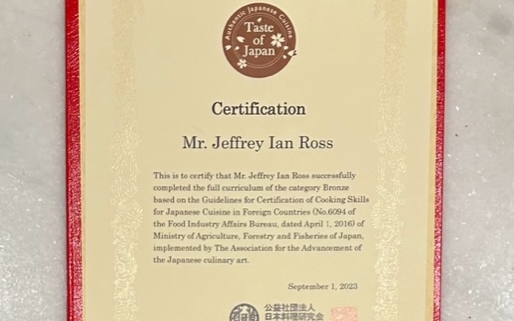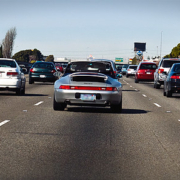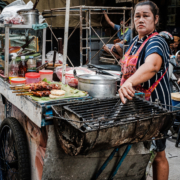Why, how, and what I learned by earning my Bronze Certification in Japanese Cooking
If you don’t live in Japan, have knowledgeable, skilled, and willing Japanese relatives and/or friends, or want to work in the kitchen of a decent Japanese restaurant for an extended period, it’s challenging learning how to cook traditional or home style Japanese food (also known as Washoku).
Sure you can make your way through a handful of respectable Japanese cookbooks or watch YouTube instructional videos, as I have, but this approach also has its limitations.
With the exception of the Sushi Academy in Torrance, California, (which focuses on one of the most popular but admittedly narrow type of Japanese cuisine), no formal cooking schools dedicated to teaching aspiring Japanese chefs currently exist in the United States.
Instead, you’re more likely to find occasional short-term workshops, specializing in highly specific Japanese food items (e.g., Ramen, etc.) offered online through platforms like Udemy, or in person, made available by cooking schools, such as Sur la Table, or Japanese cultural organizations (e.g., The Japan-America Society of Washington, DC), typically located in big cities.
Unfortunately, this kind of instruction is short-term, superficial, and lacks widely recognized certification components.
So, what options are available for enthusiasts like me, living in the United States who want to improve their ability to cook Japanese food?
Fortunately, I located an educational program that opened the doors to authentic Japanese culinary expertise.
The Bronze Certification Journey
It turns out that in 2016, Japan’s Ministry of Agriculture, Forestry and Fisheries (MAFF), in collaboration with The Association for the Advancement of the Japanese Culinary Art (AAJ), (the oldest Japanese culinary research organization in the country, with a membership of 10,000 Japanese chefs), developed a set of guidelines for recognizing individuals’ expertise in preparing Japanese Food.
This system classifies the expertise of Japanese chefs into three categories: Bronze, Silver and Gold. In order to achieve each level, candidates must successfully pass both written and practical tests.
The good news is that the Bronze certification can be earned entirely online through an accredited asynchronous course supervised by AAJ and sponsored by MAFF.
The classes are offered in English and only available for foreigners, with deadlines for the three stages (i.e., beginner, intermediate and advanced). A handful of designated Japanese cooking schools administer the certification process.
Over the past year, I enrolled in the courses, diligently watched instructional videos, and completed tests for the beginner, intermediate, and advanced stages. To deepen my connection with the subject matter and those managing the course, between earning my intermediate and completing the advanced Bronze certification, I completed a basic Japanese language class, and visited Tokyo where I had the pleasure of meeting the owner, course manager, and principle chef of Tsjuki Cooking School.
Pros and Cons of the Certification Process
On the Down Side
If you thrive best with face-to-face instruction and struggle with independent learning via distance modalities (esp. receiving instruction via videos and taking tests on-line, and submitting videos of yourself mastering cooking particular dishes) this course may not be suitable for you.
Although the videos are well produced, some content may seem repetitive. For example, it’s not really necessary to see one video on how to scale, clean, and fillet a horse mackerel and another one repeating this process with sea bream. In other words, once you have seen one video on this topic then any subsequent lessons are probably going to seem redundant. Then again, this is not necessarily a bad thing, because it reinforces the same basic skills.
Additionally, the continuous low-volume elevator music playing in the background of the videos can be a little annoying. Also watching online videos can become monotonous and lead to fatigue, although taking notes, as I did, can alleviate this issue. It remains unclear whether the course designers intend for participants to cook along with the videos or merely take notes, potentially extending the course duration if the former is preferred.
On the positive side
Despite these challenges, the course presents a well-structured series of instructional videos. The slow pacing allows for pausing and note-taking at your own pace. Additionally, the inclusion of different narrators and occasional slow-motion sequences enhances the understanding of various cooking processes.
One major advantage of this course is the satisfaction of completing an accredited program, ensuring accountability in your culinary education.
Although some casual observers may question the effectiveness of learning through videos, written texts, online tests, and self-taped video submissions, it proves to be a practical approach, especially when compared to limited alternatives.
My own journey had its share of hurdles; I even had to retake half of the final practical test on fish filleting. However, the chef’s detailed feedback on my strengths and areas for improvement proved invaluable.
In today’s educational landscape, online instruction is becoming increasingly prevalent, even among traditional instructors and professors. Moreover, my experience with this course has provided valuable insights that I can use to enhance my own teaching methods.
A Taste of Mastery
Completing the Bronze Certification has been a rewarding journey, one that has opened more doors for me towards a deeper understanding of Washoku. Even though it may not be the ideal choice for everyone wanting to improve their ability to cook Japanese food, for those willing to embrace distance learning and a bit of repetition, it offers an accredited path to mastering the art of Japanese cuisine.
As culinary education continues to evolve, embracing online modalities can be a valuable step toward acquiring new skills and knowledge.
(Those interested in my Washoku – traditional Japanese cooking, may want to visit https://www.instagram.com/_gaijinchef/)












